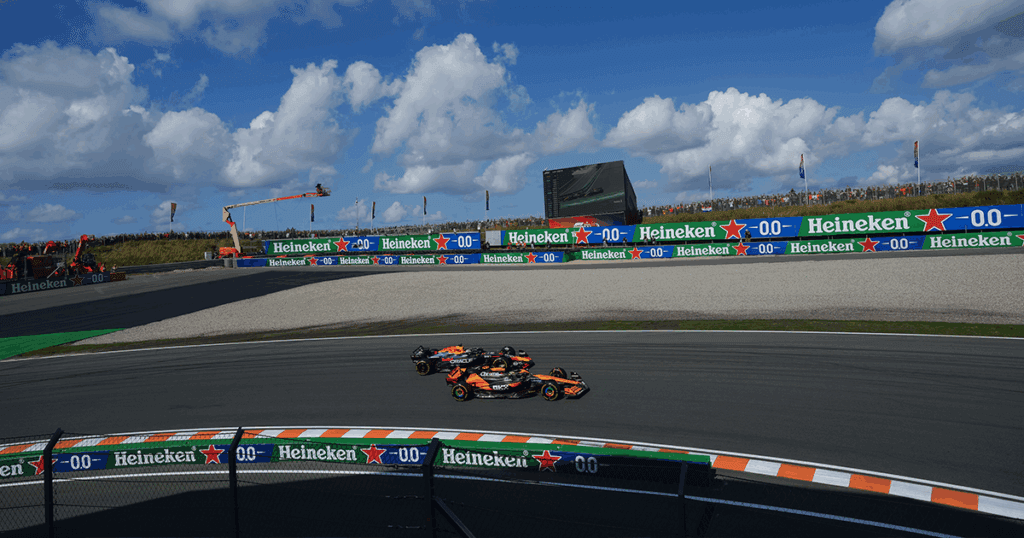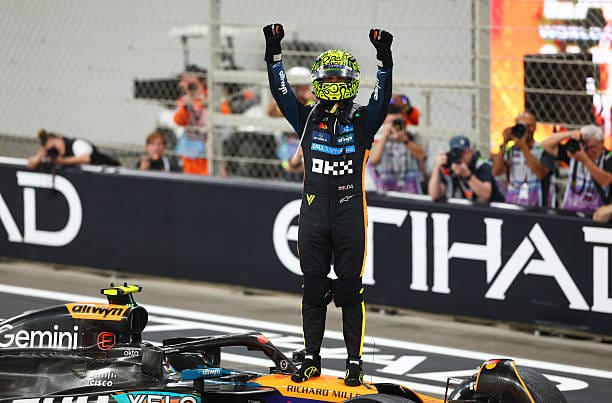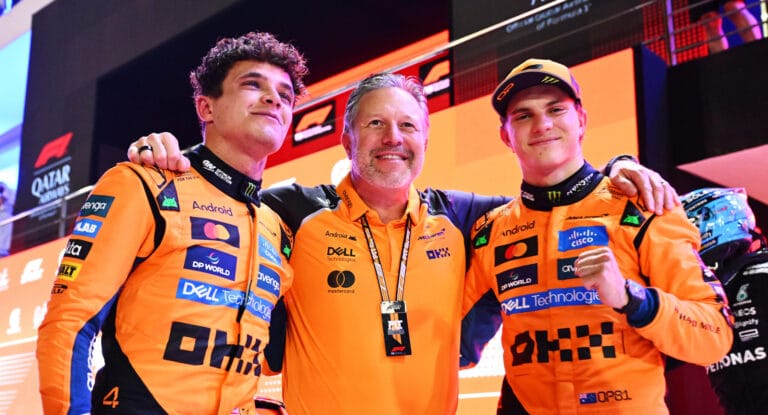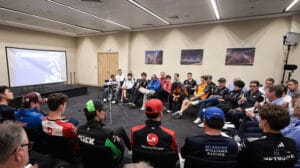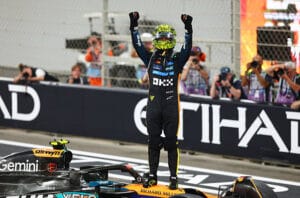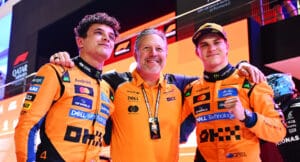The two banked turns in the new design of Circuit Zandvoort have proven their entertainment value at the Dutch GP. Rob van den Heijkant, a technical expert, explains the impact of such a turn on a car.
“Let’s zoom in on the centrifugal force, because that’s what makes a banked turn so interesting. Normally when you go through a turn, you deal with the downforce, the weight of the car, and the centrifugal force, also known as the centrifugal force. You can think of this a bit like a centrifuge in a washing machine where everything is flung outwards. And the faster you go through a turn, the harder you are pushed to the outside of the turn. This, together with the grip of the tires, which is the only contact point of the car with the asphalt, determines the maximum speed in a turn. As soon as the tires can no longer withstand the centrifugal force, you are pushed outwards.
In a banked turn, something special happens. The downforce remains the same there, because this force continues to press perpendicular to the road surface just like in a flat turn. But the centrifugal force that pushes you outwards is now partly directed at the road. So instead of just the downforce and the weight of the car exerting pressure on the tires, you now have part of the centrifugal force pushing the car extra against the ground. This allows you to go even faster through a turn. And the faster you go through the turn, the greater this force is and the harder you are pushed against the ground.”
Indianapolis 2005
In the past, when downforce did not yet play a significant role in motorsport, banked turns were used much more often to increase speed. Think of the large banked turns in Monza and Indianapolis. At this American circuit, things went wrong in 2005, precisely because of the banked turn. The Formula 1 cars went so fast through that turn that the Michelin tires gave out. The French tire manufacturer withdrew from this race, leaving only the six cars equipped with Bridgestone rubber to start.
For a long time, there were no banked turns on the F1 menu, until Zandvoort introduced banking in both the Arie Luyendyk turn and the Hugenholtz turn. The latter is particularly interesting because you can drive different lines there. At the bottom, you have a slow but shorter line. At the top, you have a fast but longer line. And it’s faster because you create more downforce there and a greater centrifugal force. These two forces simply help you to go faster through a turn, and that’s what a banked turn is all about. It’s wonderful that it’s back in Formula 1.”


